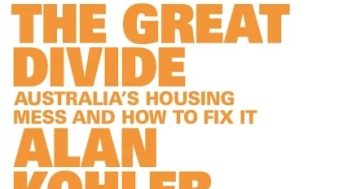David Chau * looks at the impact on housing values the coming Federal election and recent Royal Commission are having.
 Australia’s property downturn has continued into the new year — with the national value, on average, dropping 1 per cent last month.
Australia’s property downturn has continued into the new year — with the national value, on average, dropping 1 per cent last month.
Since peaking in October 2017, the median value has fallen 6.1 per cent to $528,553, according to the most recent figures from property analysts CoreLogic.
Stricter lending standards and “a further dent to confidence” are expected ahead of the federal election and banking Royal Commission’s final report.
“This is the new normal,” Tim Lawless, CoreLogic’s head of research, told ABC News.
“For prospective borrowers, it’s become much harder to obtain finance if they’re on high debt-to-income ratios, or have a track record of large expenses.”
“Tight credit conditions, weakening consumer sentiment, less domestic and foreign investment and higher levels of housing supply are the primary drivers of the worsening conditions.”
Falls in almost every capital city
Sydney and Melbourne experienced the weakest conditions once again, with values falling by at least 1 per cent each month since November 2018.
The latest results take Sydney’s median home value back to where it was two-and-a-half years ago (July 2016), and Melbourne dwellings have reverted to their January 2017 values.
Hobart remains the best performing market (from a seller’s perspective) with prices rising 7.4 per cent in the last year to a median of $457,785.
But Tasmania’s capital is showing signs of slowing down, recording a 0.2 per cent fall
in values in January.
Every capital city, except for Canberra, saw a fall in their median values last month.
There was a silver lining (for landlords) as every capital city — except for Hobart and Darwin — saw a lift in rental yields over the last 12 months as prices fell but rents remained relatively steady.
Upper-end of the market weakens
The most expensive quartile of the housing market experienced the biggest fall in values.
In particular, CoreLogic observed that the most expensive 25 per cent of housing stock in Melbourne and Sydney markets dropped 12.4 and 10.8 per cent in value in the last year.
“The lower valuation brackets have benefitted from higher demand from first home buyers as well as tighter lending conditions for borrowers with higher debt-to-income ratios,” Mr Lawless said.
He noted this was “likely supporting a shift of demand towards lower price points”.
“Although the more affordable valuation brackets across Sydney and Melbourne have seen some resilience to falls early in the decline phase, it’s clear that all segments of the market in Australia’s two largest cities are losing value.”
* David Chau presents the finance report on ABC News Radio, and is a business reporter based in Sydney. He can be contacted @chaudave.
This article first appeared on www.abc.net.au











